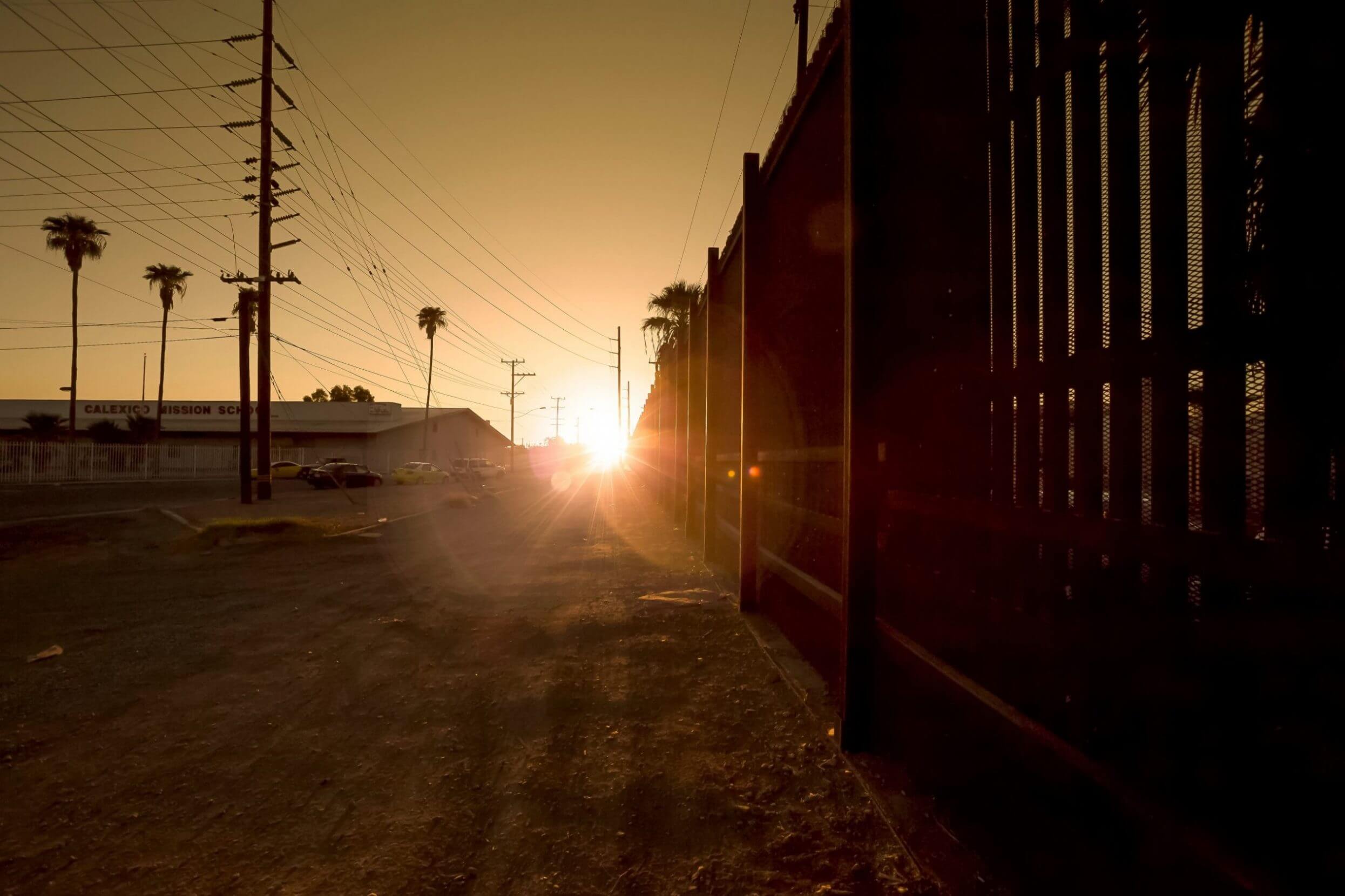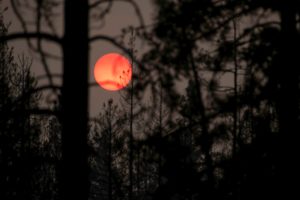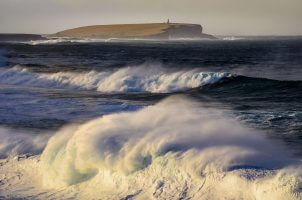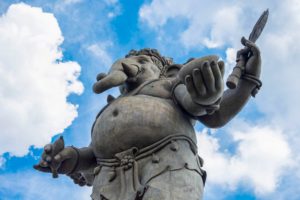Support Hidden Compass
We stand for journalism, science, history, and hope. Make a contribution to Hidden Compass and stand with us.
Maybe he told her that he would protect her, that she’d be safe on the journey. She wasn’t quite two, but clung as tight as she could to his warm body. Perhaps he told her they’d be living free on the other side of the border when her birthday came, celebrating with aunts and uncles and cousins who loved her. He knew crossing was dangerous, that strange men would shoot them and ask no questions, but he clung to the promise of life on the other side. They would have freedom and safety — he a better job, she a good education. One night, against his family’s wishes, he wrapped his daughter’s small body to his back inside his shirt and tried to carry her to freedom.
~~
June, 2019
Berlin Wall Memorial. I’m looking at faces of the dead: those who died trying to escape to the West. The Window of Remembrance — three rows of transparent black and white photos, set in a rusted wall roughly two meters high — displays photographs of some of the 140 victims who died at the Wall. The faces that look back at me are mostly young men, but also a smiling woman with set curls and glasses who could be a grandmother, a middle-aged father, a child. Walter Heike (29) wears a suit and tie, his long forehead topped with a wide pompadour; Elke (22) wears a bouffant and dark eyeliner, her husband Dieter Weckeiser (25) looks out with a wry smile; Michael Schmidt (20) has full lips and a stern brow; Marinetta “Micki” Jirkowski (18) has short dark hair, rounded cheeks, and a coy smile — all were shot dead as they tried to flee.
A chill runs through me as I think of them, each a complex and caring and hopeful human looking for a better life, struck dead trying. Just like a Salvadoran father who tried to cross into the United States with his daughter. This week in June, the news is full of a photo of Oscar Alberto Martinez and his 23-month-old daughter Angie Valeria, her small arm draped around his neck, their drowned bodies face down on the bank of the Rio Grande. With few job opportunities and rampant gang violence in their neighborhood, Oscar saw no choice but to flee to a better life across the border. The weight in my stomach grows heavier.

Nov. 30, 1961. As the holiday season approaches, West Berliners try to stay in contact with friends in East Berlin by waving to them across the border. From the booklet ‘A City Torn Apart: Building of the Berlin Wall.’ Photo: The CIA Historical Collection.
~~
February, 1989
I’ve just started studying in the UK with a group of American university students. We’ve talked about Berlin, how Great Britain, France, and the US control the three western sectors and the Soviet Union has the east, how you could fly into the west side but it was tricky, dangerous, just the thing to appeal to a group of subversive and ignorant young adults. Some of us think the others are crazy for even suggesting such an act: Don’t you know they shoot people? Yeah, but not on the west side. Still, you could get a visa to go to the east, couldn’t you? Our American arrogance combines with our youthful disregard for safety as we talk big plans. Some have already booked spring break in Russia, the epicenter of the Soviet Union, albeit the only way an American could — through a highly restricted and guided tour, but the intrigue runs through us like iced vodka. Growing up in the USA, we’d been told all our lives how dangerous the USSR is, how dangerous any country in the East is, and as reprimands our parents all said some version of “be glad I don’t send you there!” The word communism stokes in us both fear and curiosity. We want to see it for ourselves. Russia or Berlin, I’m longing to go, but don’t have the funds.
A chill runs through me as I think of them, each a complex and caring and hopeful human looking for a better life, struck dead trying.
Our plans, serious or not, end weeks later when we learn that Chris Gueffroy — born the same year I was, and likely just as full of curiosity and wanderlust — tried to escape to the American sector to a better life, but was shot in the heart.
~~
Berlin, July, 2019
In the grass at my feet lies an incident marker, one of dozens of metal plates embedded in the ground to show where a significant event happened: an escape, an arrest, a death. Engraved on its surface are a date, a reference number for more information, and a summary: 9 Festnahmen, 9 arrests. The lawn where I and others quietly stroll was once the death strip, brightly lit and full of snares. On the sidewalk under my feet, border soldiers shot down people looking for freedom.
There’s a park-like tranquility here as I walk along the remnants, next to the iron bars marking the path of the Wall and the original concrete sections, past the new sections built for the memorial. Grassy lawns line the paved paths, and educational placards explain the ways lives were lived when the wall separated East and West. Few people are here midweek in early July. Families, groups of young adults, and couples quietly wander through the outdoor memorial. I read stories of a sister or two in the west, a brother in the east; parents here, children there. Families torn apart, separated at first by simple barbed wire, then a brick wall, a trench, steel spike strips, sand traps, eventually the concrete outer wall, the guard towers, the inner wall, the death strip. I step on another metal marker.
~~
June 12, 1987
US President Ronald Reagan speaks in front of the Brandenburg Gate in Berlin, mere feet from the Wall that “encircles the free sectors of this city” and cuts Germany in two, like “a scar.” As Americans, our national narrative tells us that we stand for freedom, liberty, justice — that we are leaders of the free world. In his speech, Reagan uses the word “freedom” seventeen times. He names the sides in black and white: prosperity in the West, but failure, hunger, and Soviet aggression in the East.
~~
In 1987, a month after Reagan’s speech, I boarded a train in Vienna for a short segment of the famous Orient Express route that runs to Istanbul. Traveling alone, I felt a mix of glamor, mystery, and fear. What if I disappeared? I’d heard plenty of stories over the years about the things that could happen, especially to an American. Would my government rescue me? I had only dollars, no Hungarian forint, but I’d heard greenbacks were accepted if nothing other than for the black markets. The train slowed.
Hungarian soldiers boarded the train to inspect our travel documents, and a young blond with pale cheeks, not yet ready to grow a beard, blocked the door and asked for my bags. I saw terror in his body when, upon seeing my blue American passport, he recognized me as the enemy. He inspected my visa with shaking hands, his body tense and clumsy. I scanned his dark green uniform, the white belt, and what looked to my American eyes like a small purse slung across his chest. The train had stopped in a middle zone between the countries where this soldier could refuse my entry, where I had one last chance to return to freedom.
Outside of the train, a handful of Russian soldiers marched along the tall wire fence, past a few Hungarian soldiers taking a smoke break. I tried not to look too hard at the Kalashnikov the young soldier wore at his side. I carried only a large purse and camera, and knew that might flag me in some way. I smiled as if to say, in some other universe we might be friends, right? And yet, I came from a place where we all feared the Eastern bloc, where the nightly news showed endless stories of how people disappeared, were shot, tortured, or indefinitely detained for trying to escape to a better life.
~~
Now, the US indefinitely detains people caught trying to escape to a better life. Although the exact numbers are unclear, today, the United States Immigration and Customs Enforcement have locked up thousands of adults and children with few records, so they cannot reunite. While the US increased deportations under the last two administrations, the overcrowding and inhumane treatment has worsened under the current administration. There are marked differences between the situation in Berlin and the situation now, but there are also similarities. We keep erecting walls, scarring the earth to divide “us” from “them.”

The sun rises along the border fence separating the United States and Mexico. Photo: Micky Strider/Alamy.
Meanwhile, on a dusty road outside of McAllen, Texas, a two-year-old Honduran girl desperately cries as her mother is pat down by an ICE agent. At the largest detention facility, not far from where they stand, parents and children are separated, locked up in cages. In the desert heat, in the river waters, people are dying for freedom. Have we forgotten something critical in our national story? The story that Reagan referenced when he said, “We welcome change and openness; for we believe that freedom and security go together, that … the advance of human liberty can only strengthen the cause of world peace.” Instead of granting freedom and security, peace and liberty, we raid homes, divide families, and deport millions. From the detainees, we withhold essentials — clean diapers, soap, water. We cram 155 people into a cell built for 35.
~~
July, 2019
As I walk along the Berlin Wall, past and present collide.
Some Americans like to think that when he said, “Mr. Gorbachev, tear down this wall,” Reagan influenced the Wall’s demise two years later. Regardless of the veracity, the Wall did fall and a city and people were reunited on the ninth of November, 1989. What remains now — 1.4 kilometers of steel and concrete — exists to remind the world, so that this doesn’t happen again. But it is happening again.
We keep erecting walls, scarring the earth to divide “us” from “them.”
I walk slowly through the Berlin Wall memorial grounds, questioning borders. From the viewing platform across the street from the Wall, the entire historical site is visible, toy-like and small. On the free side, people listlessly take selfies, hold hands, shuffle their children along the Wall.
Where the German Democratic Republic once ruled, a guard tower rises between the inner and outer walls with a large searchlight positioned on the death strip. There, a young soldier once proudly stood behind the light, his duty to kill fellow citizens seeking a better life.
Decades later and some 4,500 miles away, young American agents now guard a very different border. They too do their duty as they detain, among others, those seeking a better life.
~~
People are now mindlessly crossing this street in Berlin, past a border that in my lifetime had kept apart colleagues, friends, families; a city, a country, a region.
I cannot construe what I feel in this space: the pleasures of movement in a place that not long ago was locked off; the amazement over how quickly we can reconcile and forgive and regroup; the helplessness of witnessing another wall rise. Every plaque here, every photo of someone who died trying to get over the Berlin wall makes me think of the people crossing today’s borders.
At some point later in my life, might I walk another wall memorial like this, along a hot and dusty border? Might I come across another Wall of Remembrance with photos of a young man and his 23-month-old daughter?
Perhaps her plaque would have an inscription: Twenty-three months; drowned holding on to her father’s back as he swam toward the promise of a new life.
Kelly A. Harrison
Kelly A. Harrison, losing track of all the amazing things she's done, thanks the gods for digital photos and Adobe products.
Never miss a story
Subscribe for new issue alerts.
By submitting this form, you consent to receive updates from Hidden Compass regarding new issues and other ongoing promotions such as workshop opportunities. Please refer to our Privacy Policy for more information.



